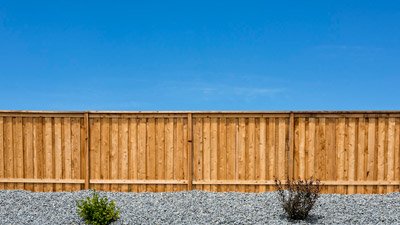Picture this: you live in a quiet, comfortable part of town. You wake up in the mornings to the sounds of chirping birds and rustling trees. You might be close to civilization, but you’re far enough away to find peace in the quiet of your home. Until one day that serene auditory landscape comes screeching to a halt. Maybe the Google maps algorithm has suddenly decided that your street is now the best way to get from a popular point A to point B. Maybe your neighbor has decided to begin undertaking a construction project which requires heavy equipment that revs and clanks at all hours of the day and night. Maybe your new HVAC system, which keeps your home cool, also keeps you distracted by its constant whirring. Maybe you don’t have to imagine; maybe this has happened to you.
Your home is your sanctuary. Unlike anywhere else on earth, in your home, the buck stops with you and only you. Unwanted noise from the outside world can destroy that sense of sovereignty or even make it impossible to think. We now know that constant noise affects not only your mental health, in the form of increased anxiety, but also your physical health, in that it may prevent you from getting a good night’s sleep or even damage your hearing after prolonged exposure. Whether a new addition to the aural landscape has made life a little more difficult, or a long-term source of sound nearby has finally driven you to your wits’ end there is a solution. Don’t despair. Act.
Sound Barrier Fences
Installing a sound barrier fence is the absolute most effective method of preventing unwanted outside noise from seeping into your property. Take note of how far music from a speaker carries when unobstructed. Now put a piece of cardboard in front of that speaker and stand the same distance away. Now swap the cardboard out with a piece of plywood. You’ll find that the more mass the barrier object has, the harder it is for a sound originating from beyond it to travel to the other side. This principle of mass is key when protecting your home from foreign noise.
Especially dense masonry materials including stone, brick, or concrete, are the best options for sound barriers. Their immense mass all but blocks out noise entirely. Building up walls of earth known as “berms”, too, can prevent noise from entering your property. However, installing fences using any of these methods can be time, cost, and labor-intensive. Many of the materials listed above may not complement the existing aesthetics of your property. Fortunately, several other methods can be employed to craft a powerful sound barrier without compromising the look of your home or paying as large of an upfront cost.
If you choose to use a more traditional fencing material like wood, there are methods you can use to make your fence effective despite its lack of density when compared to more solid construction materials.
Factors to Consider When Constructing an Effective Sound Barrier Fence
Even more important than the materials themselves is the actual construction of the fence. For optimal noise exclusion, the materials making up your sound barrier fence should be as contiguous as possible. The fewer gaps in your fence, the less sound will be able to penetrate your property. For best effect, your fence should have no space between the boards. To accomplish this, you’ll generally want to use “tongue and groove” technology, in which each board making up your fence fits snugly into its adjacent boards. Make sure that there are no gaps at the bottom of your fence either, as street noise will always take the path of least resistance.
Another important element to consider is the height of your fence. Sound waves can pass right over a short fence, so making sure that your fence is tall enough to block all sound is integral to the success of your project. In general, if you can see the source of a sound, you’ll also be able to hear it. So if you have an elevated attachment to your home that you want to protect, you’ll need an especially tall fence. However, be wary of your local ordinances. A tall fence might attract the ire of your neighborhood homeowner association or local government depending on the law of the land.
If you don’t want to go through the trouble of constructing an entirely new, soundproof fence, there are ways to enhance the sound retardant qualities of an already existing fence. Materials such as sound blankets or mass-loaded vinyl can be built into a fence to block out more noise than the pre-existing materials. These types of add-ons must be applied between two layers of fencing, so an existing fence will have to go through some renovations, but won’t need to be rebuilt entirely. These may be good options if your noise problem is confined to an HVAC that requires a small fence around it, or if you don’t want to go through the trouble of a complete fence overhaul.
The Sounds of Science
In any case, the goal of your sound barrier fence should be to reduce outside noise by about 8 to 10 decibels. Ambient noise generally measures at 60 to 70 decibels, or roughly the sound of a nearby conversation to the sound of a household appliance such as a hair dryer or air conditioner. Prolonged exposure to noise over 70 decibels can lead to hearing loss. Our perception of sound is logarithmic, so even knocking off this small handful of 10 or so decibels from the ambient noise entering your home, will make it seem half as loud. This can be accomplished effectively with the methods we’ve discussed.
Human psychology also may come into play when soundproofing your property. A fountain, or another element that produces white noise, can distract your mind from other ambient sounds. Some people find that planting trees or bushes near the edge of their yard, to simply block their sight, has a dampening effect on their perception of sound. However, building an effective sound barrier fence is the only surefire method to reduce ambient noise on your property, and live a healthier, happier, and more peaceful life.

